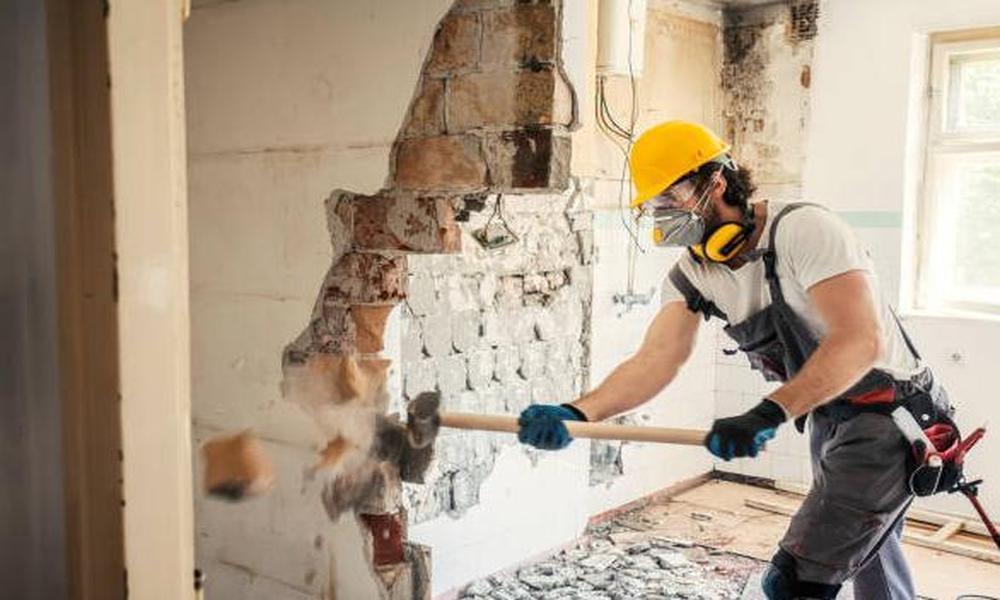Revamping with Purpose: Unleashing the Potential of Building Renovation
Introduction
Building renovation is a transformative process that breathes new life into tired and outdated structures. From repurposing historical buildings to modernizing commercial spaces, renovation has the power to unleash the full potential of a structure. In this blog post, we will explore the importance of building renovation, the benefits it offers, and the various ways in which it can be carried out.
1. The Significance of Building Renovation
Building renovation holds immense importance in preserving architectural heritage and revitalizing communities. It allows us to repurpose existing structures rather than tearing them down, minimizing waste and preserving valuable resources. Moreover, renovation contributes to sustainable development by reducing the environmental impact associated with new construction.
2. Enhancing Functionality and Efficiency
One of the primary goals of renovation is to enhance the functionality and efficiency of a structure. Whether it is improving the layout of a residential property, retrofitting an office space for better workflow, or optimizing energy efficiency through insulation and HVAC upgrades, renovation helps create spaces that are better suited to the needs of their occupants.
3. Preserving Architectural Heritage
Historical buildings are valuable cultural assets that tell stories of the past. Renovation plays a crucial role in preserving and restoring these architectural treasures. By carefully renovating historical structures, we can maintain their unique character while adapting them to meet modern standards and functionality. This blend of the old and the new creates a sense of continuity and keeps history alive.
4. Creating Sustainable Spaces
In an era where sustainability is paramount, building renovation offers an opportunity to create environmentally friendly spaces. Through energy-efficient upgrades, the installation of renewable energy systems, and the use of sustainable materials, renovation can significantly reduce a structure’s carbon footprint. By repurposing existing buildings instead of constructing new ones, we minimize the demand for new resources and promote a circular economy.
5. Increasing Property Value
Building renovation can have a significant impact on property value. A well-executed renovation project can breathe new life into a property, making it more attractive to potential buyers or tenants. Upgrading outdated features, improving functionality, and enhancing aesthetics can significantly increase the value of a building, providing a solid return on investment.
6. Repurposing and Adaptive Reuse
Building renovation allows for the repurposing and adaptive reuse of existing structures. This practice is particularly valuable in areas where land availability is limited. By transforming old warehouses into trendy lofts, converting historic buildings into boutique hotels, or turning empty office spaces into vibrant co-working hubs, building renovation breathes new life into underutilised structures and revitalizes neighbourhoods.
7. Modernising Commercial Spaces
For businesses, renovation offers an opportunity to modernise and optimise commercial spaces. Outdated office buildings can be transformed into state-of-the-art workplaces that foster collaboration and productivity. Retail spaces can be redesigned to create immersive customer experiences. Restaurants can be renovated to offer unique dining environments. Building allows businesses to adapt to changing market demands and stay competitive.
8. Balancing Aesthetics and Functionality
A renovation strikes a delicate balance between aesthetics and functionality. While enhancing the visual appeal of a structure is important, it should not come at the expense of functionality. Renovation projects aim to create spaces that are not only visually pleasing but also practical and efficient. Thoughtful design choices and careful planning ensure that the renovated building meets both aesthetic and functional requirements.
9. Collaborative Approach
Successful building renovation projects require a collaborative approach involving architects, designers, engineers, and contractors. Each professional brings their expertise to the table, ensuring that the renovation process is smooth and seamless. Collaboration fosters innovation and enables the realisation of creative ideas, resulting in exceptional outcomes.
10. Case Studies and Success Stories
Numerous renovation projects have showcased the potential of this transformative process. From the adaptive reuse of industrial spaces to the restoration of historical landmarks, each project tells a unique story of repurposing and rejuvenation. By exploring case studies and success stories, we gain inspiration and insight into the possibilities offered by renovation.
Conclusion
Building renovation is a powerful tool that can unleash the full potential of existing structures. From preserving historical landmarks to creating sustainable spaces, renovation offers numerous benefits. By repurposing, adapting, and modernising buildings, we can create functional, efficient, and visually appealing spaces that contribute to the well-being of their occupants. Embracing building renovation is an investment in the future and a testament to our commitment to sustainability and preservation.







